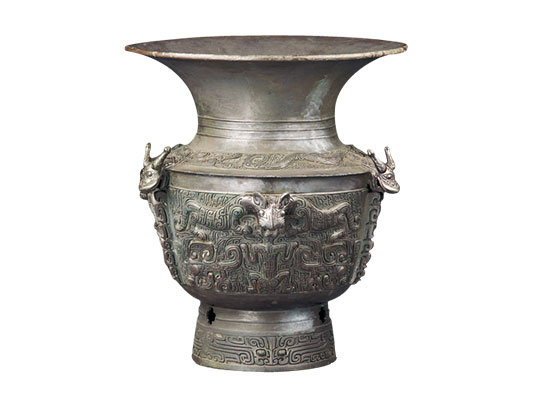The Characteristics and Significance of Bronze Zun with Dragon and Tiger Pattern in Shang Dynasty
The dragon and tiger pattern bronze statue, also known as the dragon and tiger statue, is a bronze ware from the Shang Dynasty. It has a history of more than 3,000 years. It is a kind of wine container in ancient my country. It was the most popular in the Shang Dynasty and the Western Zhou Dynasty. It was rare in the Warring States period.
It is now in the National Museum of China. The bronze statue with dragon and tiger pattern was unearthed in 1957 in Yueer River, Funan, Anhui. It is huge in size, with a wide mouth, bulging belly, high ring feet, 50 cm high, 45 cm in diameter, and weighs about 20 kg.
The mouth of the dragon and tiger statues is enlarged, the diameter is over the shoulder, the neck is higher, and the lower part is miniature, in the shape of a big trumpet. The shoulders are slightly bulging, folded down to form the belly, the bottom is an arc-shaped bottom, the feet are circled, and the top is decorated with a cross hollow.
The shoulders of the utensils are decorated with three curved dragon patterns, with round carved dragon heads sticking out of the shoulders, which are vivid; the patterns on the belly of the utensils are based on cloud and thunder patterns, and are decorated with three groups of tiger-eating patterns, which have mysterious meanings and circles. Foot decorated with taotie pattern, this utensil is a rare quality in the bronze wares of the Shang Dynasty.

The tiger man-eating pattern on the abdomen of the bronze statue with dragon and tiger pattern is based on the embossed tiger head. A man without a crown, with stripes on his body.
This composition is intended to express the complete image of the tiger from the front, but the front cannot express the majestic body of the tiger, so the axisymmetric layout is adopted to make the tiger's body expand to both sides. The taotie pattern in the Shang Dynasty also used this composition.
In addition, on the bronze tomb unearthed from the Fuhao tomb at Yin Ruins in Anyang, Henan, the outer ear of the bronze Fang Ding of "Houmuwu", and the ampulla with bird, beast and dragon pattern in the late Spring and Autumn period unearthed in Liyu Village, Hunyuan, Shanxi, all have similar images of tigers eating people. The bronze point of the tiger cannibalism, which is now hidden in the Izumiya Bogu Museum in Japan, is a three-dimensional image of a tiger cannibalizing a man, which is more expressive.
Tigers eating people are also seen on jade articles of the Shang Dynasty. The Eastern Han Dynasty Wang Chong's "Lunheng: Dinggui Pian" quoted the lost text of "Shan Hai Jing", and recorded the saying that a tiger eats a ghost. This kind of tiger-eating figure may be derived from this intention, in order to shock the evil spirits.
Today, the Funan area of Anhui was the settlement of the Huaiyi tribe in the Shang Dynasty. The shape and decoration of the bronzes unearthed here were significantly influenced by the Chinese Shang civilization. The bronze statue with dragon and tiger pattern is a typical example.
The forging technology of "Dragon Tiger Zun" is extremely complex and top-notch. After I heard that it was found and turned over to the National Museum, in order to give an imitation part to Anhui Province and Fuyang area, many experts participated in the forging work of the imitation part, but no one was able to imitate it, especially the vast mouth, which has always been a puzzle.
The imitations in the Fuyang Museum today are made of gypsum and are basically close to the originals, but the lead imitations in the Anhui Provincial Museum are far away from the originals.
The National Museum's exhibition is made of copper imitations. Because the forging technology of the original cannot be achieved, the weight of the imitation is twice that of the original. This fully shows that the production technology of Dragon Tiger Zun is very advanced.
Specializing in the production and processing of various types of Chinese bronze tripods, it can be customized for various types of tripods, four-legged copper tripods, imitation bronze tripods, etc. Wholesale orders are welcome.









